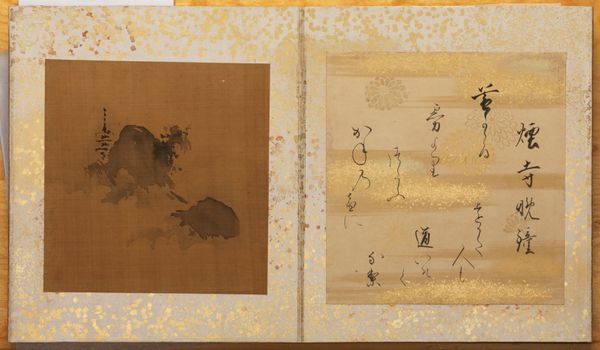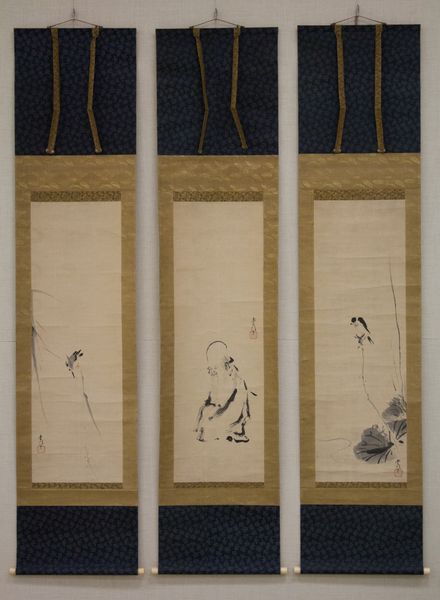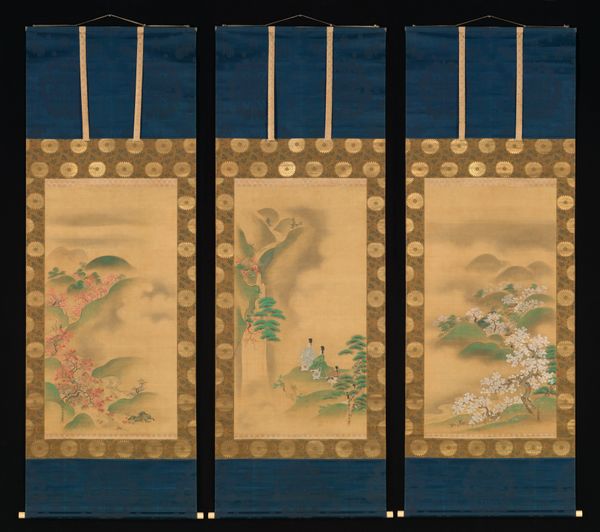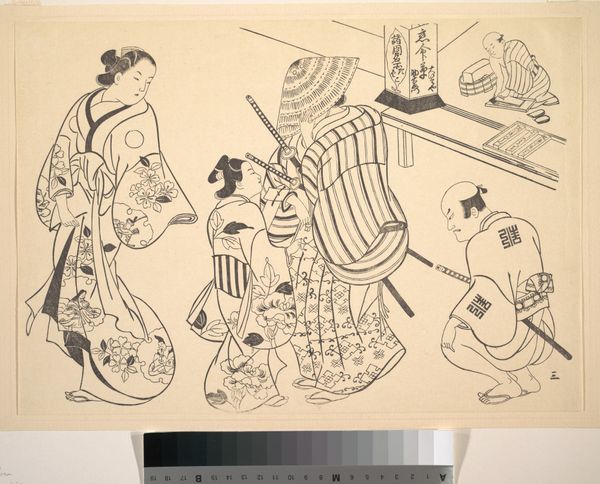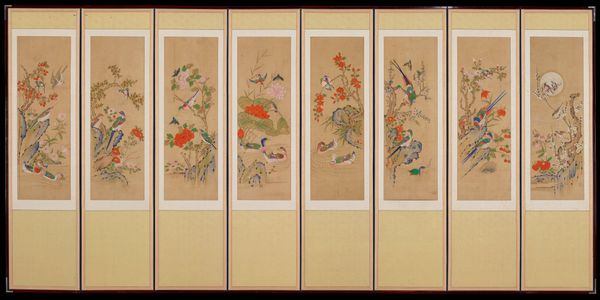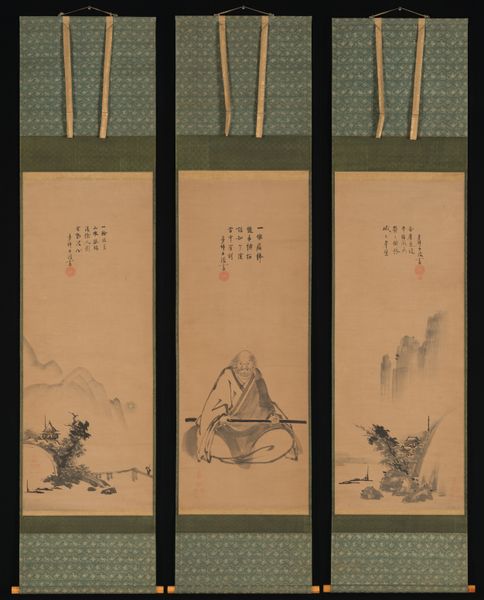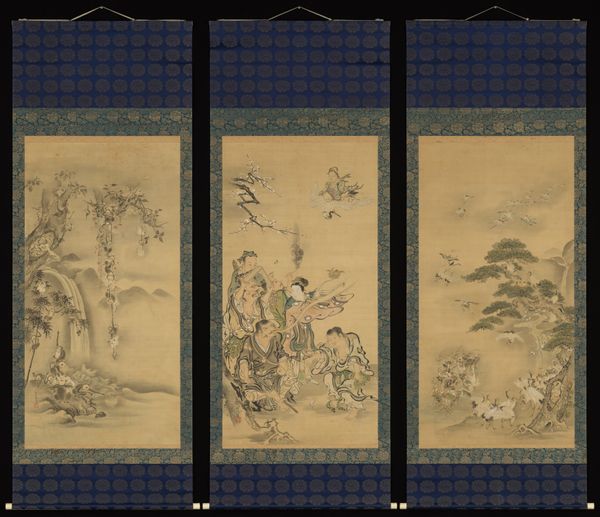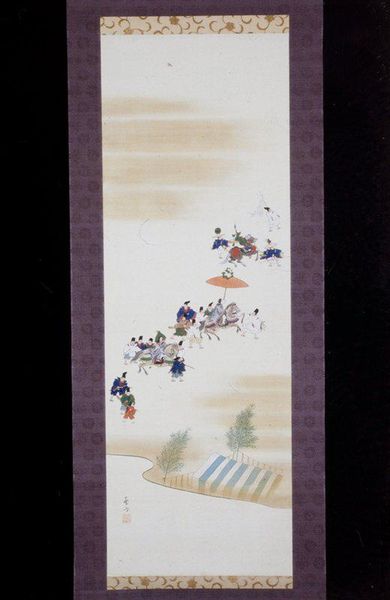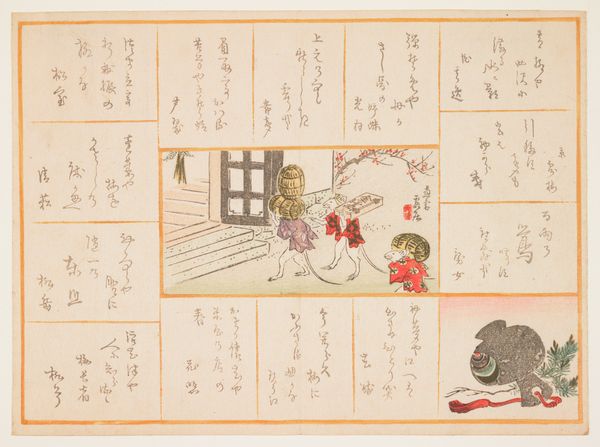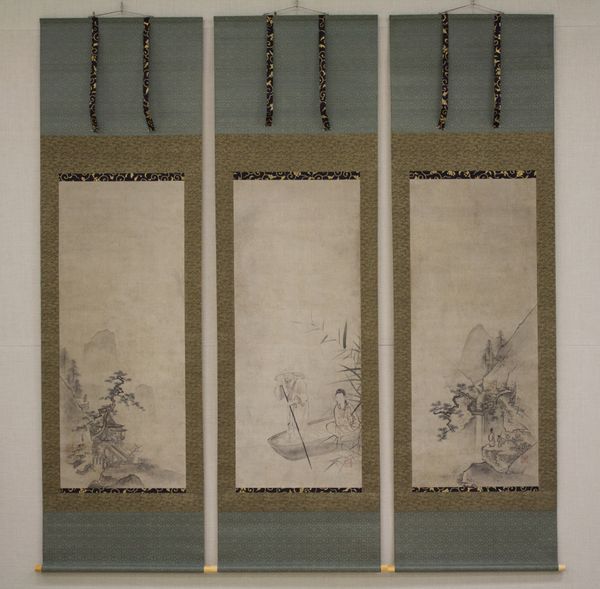
Dimensions: 58 1/8 x 18 1/2 in. (147.64 x 46.99 cm) (sight, image, sheet, each)
Copyright: No Copyright - United States
Promenade des nourrices is a four-panel screen made by Pierre Bonnard sometime in the late 1890s. Created during a period of significant social change in France, Bonnard presents a view of Parisian life, specifically focusing on the role of nannies within the upper classes. The screen format, borrowed from Japanese art, frames a world where women are central figures, though their individual identities are somewhat obscured by fashion and social role. The women depicted are likely ‘nourrices’ or wet nurses, who were often working-class women hired to breastfeed the children of wealthier families. Bonnard captures a sense of their collective identity, while also suggesting a certain anonymity within their role. The composition emphasizes a sense of rhythm and movement, mirroring the ebb and flow of daily life. It hints at themes of labor, class, and the intimate yet often invisible work of caregiving. The artist creates a narrative that touches on the personal experiences of these women and also echoes wider societal structures of the time.
Comments
minneapolisinstituteofart almost 2 years ago
⋮
At the end of the 19th century, folding screens modeled on Japanese formats were important accents in the most modern and chic Parisian dwellings. Many European artists tried their hands at the screen format. In Nursemaids' Promenade, Pierre Bonnard effortlessly arranged his scene across four panels. The stylized forms and innovative composition echo Japanese examples, but Bonnard made it his own by including a fashionably dressed Parisienne and her children situated below a frieze of carriages.
Join the conversation
Join millions of artists and users on Artera today and experience the ultimate creative platform.
